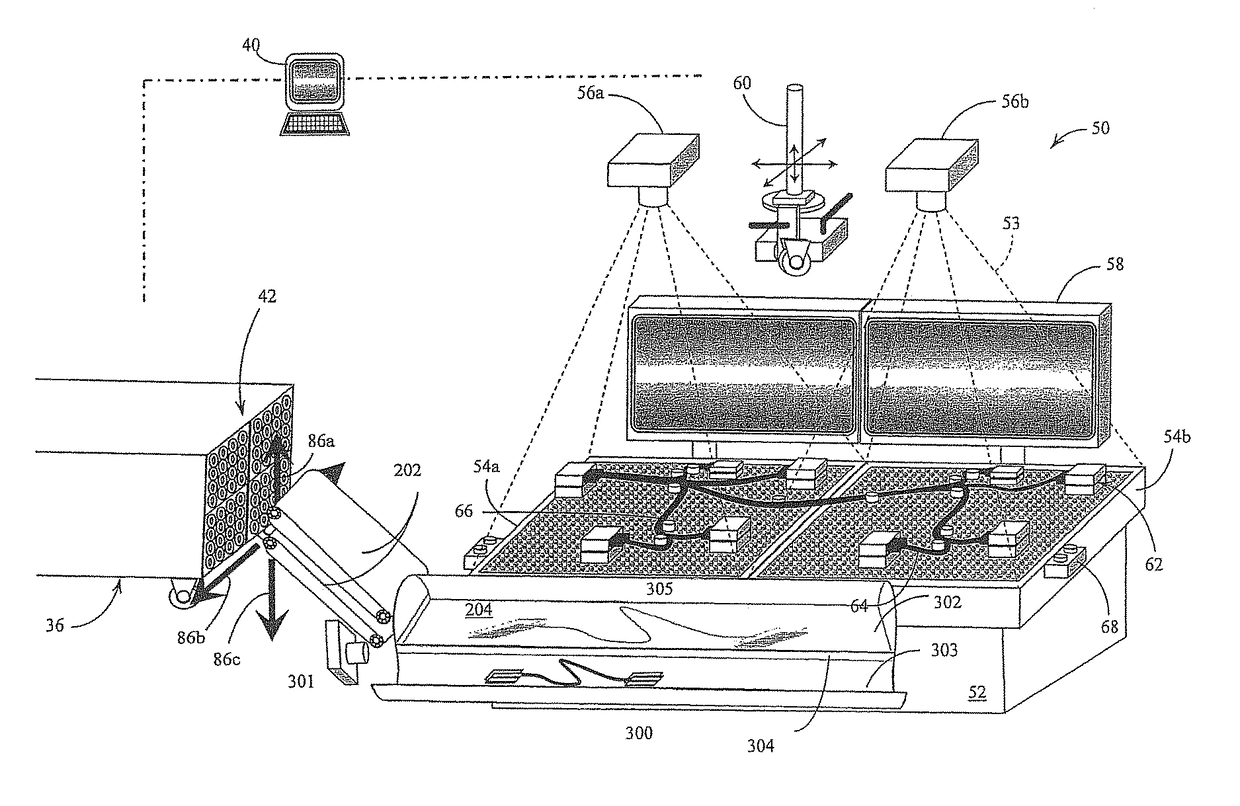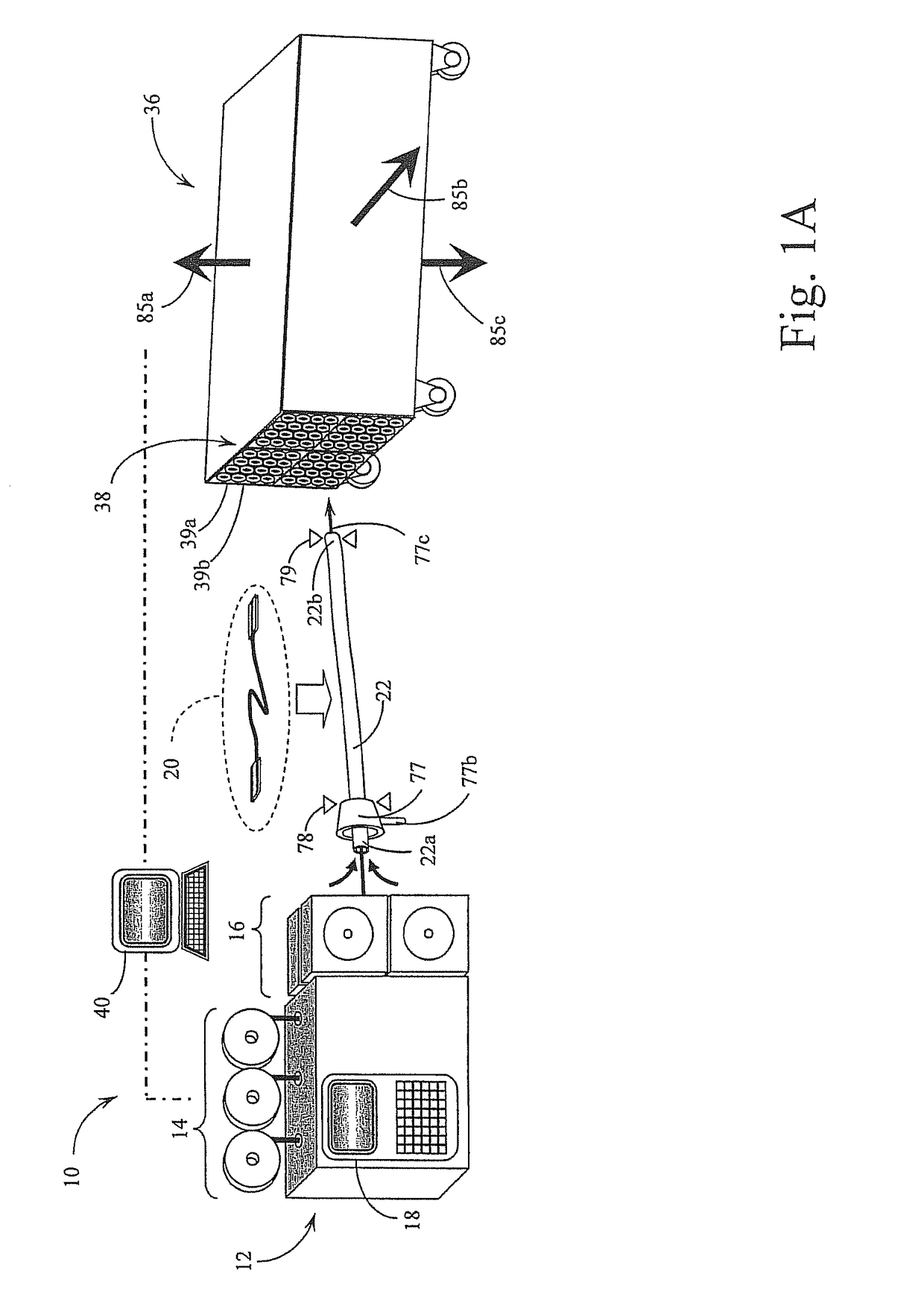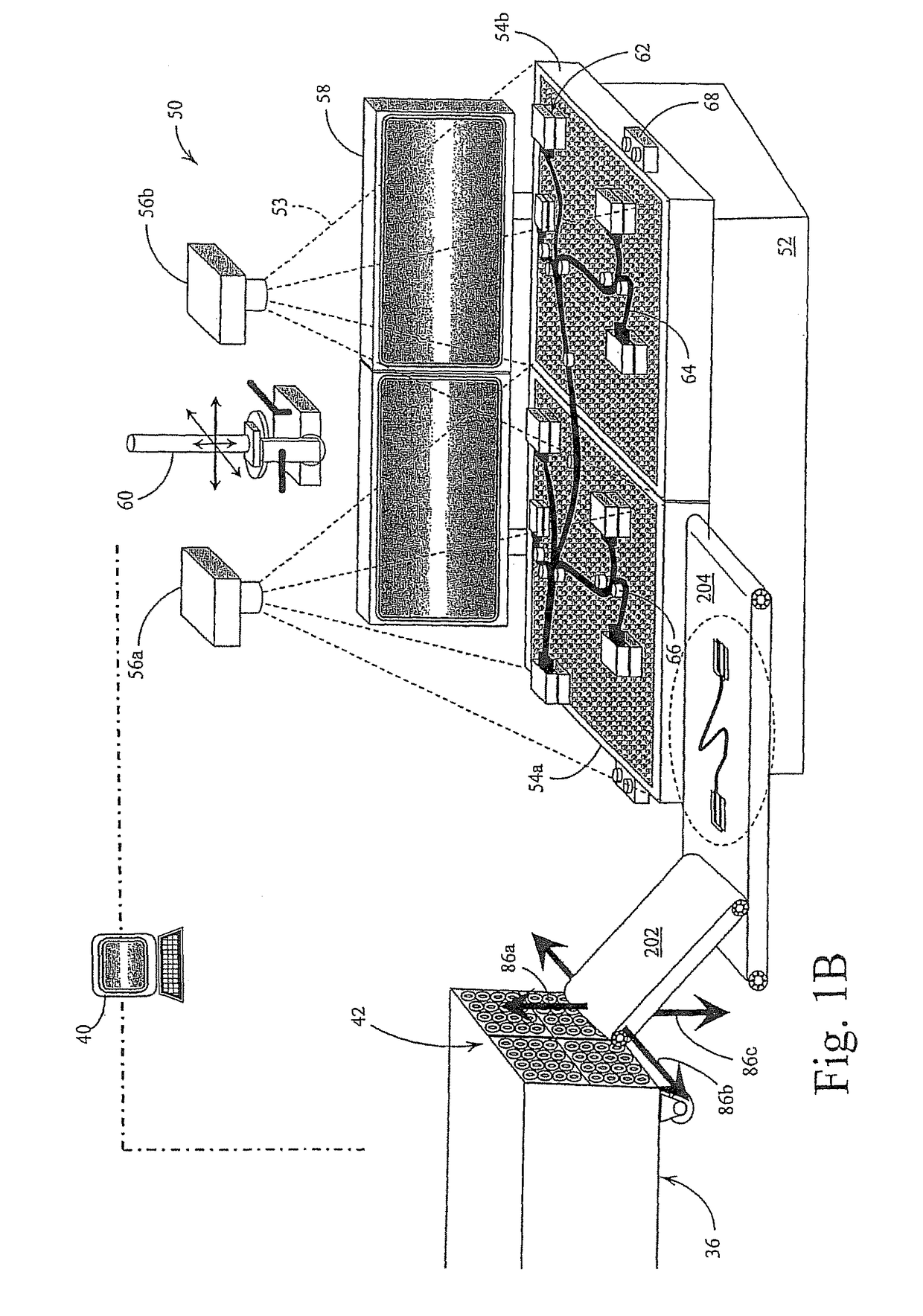Integrated wire harness batch production with double buffer assembly systems
a technology of integrated data management and assembly system, which is applied in the field of manufacturing of wire harnesses, can solve the problems of long-needed improvement of methods, inefficiencies and complexity, and long-needed labor-intensive wire harness assembly, so as to reduce the wait time for assembly personnel, minimize materials and space, and high storage density
- Summary
- Abstract
- Description
- Claims
- Application Information
AI Technical Summary
Benefits of technology
Problems solved by technology
Method used
Image
Examples
Embodiment Construction
[0023]As indicated above, it is an objective of the present invention to provide for an extremely flexible manufacturing and tooling system for the design and production of wire harnesses. The system is designed to allow the same set of tooling structures to be utilized in conjunction with a wide variety of wire harness designs and configurations, and at the same time to maintain a high level of quality control and a highly efficient manufacturing process. The systems and methods described allow for the rapid re-tooling of the system to accommodate small or large manufacturing runs and rapid change-over to the production of a new wire harness design. The systems and methods further facilitate the immediate testing and verification of the manufactured wire harnesses as well as the tracking and training of personnel involved in the production process. The following drawing figures provide an overview of the hardware and software systems utilized to carry out the methods of the present...
PUM
| Property | Measurement | Unit |
|---|---|---|
| length | aaaaa | aaaaa |
| lengths | aaaaa | aaaaa |
| length | aaaaa | aaaaa |
Abstract
Description
Claims
Application Information
 Login to View More
Login to View More - R&D
- Intellectual Property
- Life Sciences
- Materials
- Tech Scout
- Unparalleled Data Quality
- Higher Quality Content
- 60% Fewer Hallucinations
Browse by: Latest US Patents, China's latest patents, Technical Efficacy Thesaurus, Application Domain, Technology Topic, Popular Technical Reports.
© 2025 PatSnap. All rights reserved.Legal|Privacy policy|Modern Slavery Act Transparency Statement|Sitemap|About US| Contact US: help@patsnap.com



